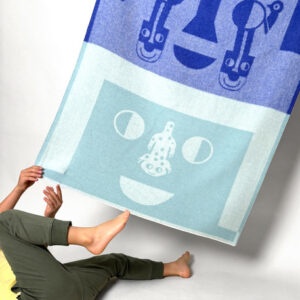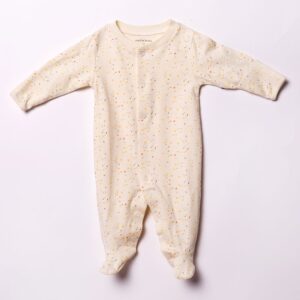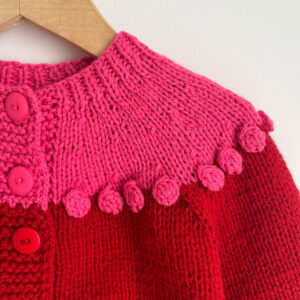12 to 36 months
THE SLEEP LIBRARY: Everything you need to know.
BABY SLEEP STAGE:
12 month (1 years old)
24 month (2 years old)
36 Months (3 years old)
SLEEP GOALS:
11-14 hours per day, with 1-3 hours of daytime sleep and 11-12 hours at night. By 18 months they’ll transition from 2 naps to 1.
It’s amazing to think about how many stages your child has gone through now that they’re a toddler.
And they’re still changing! Especially on the sleep front. Now that your baby is a toddler they need less sleep, and by the time your toddler hits 18 months they will likely drop from two naps to one.
While it may sound like a big change, trust that your toddler is capable of staying awake for 4-5 hours between their nap and bedtime. In fact, it’s the perfect amount of time to tire them out!
Toddler’s Sleep Guide
Select a topic

Your Toddler's Development
The Biology of of Toddler Sleep
Separation Anxiety
Transitioning from Crib to Bed
Healthy Sleep Habits
Naps
Movement and Sleep
Nutrition and Sleep
Creating a Healthy Sleep Space
Safe Sleeping
- Your baby will start transforming into a young child.
- Between 12 and 36 months, you will see them go from crawling to walking to running, and learn how to climb stairs and jump
- It’s time to leave baby purees behind and experiment with food. Anything you serve at home is fair game for your toddler!.
- Your easy baby may be pushing boundaries and testing their limits., Tantrums and big emotions are part of a normal healthy developmental journey in your child’s life.
- Toddlers sleep less than they did as infants, but they still need a lot of sleep!.
- Toddlers have adjusted to a regular two-nap schedule and they will soon transition to just one nap.
- Night feedings are no longer needed after 12 months. At this stage, night-feeding can cause fragmented sleep so talk to your pediatrician if you’re having trouble going a full night without a bottle or breast.
- Stay disciplined about a sleep schedule. Ensuring that your toddler’s sleep stays consistent and respecting their natural need for sleep is key to helping them sleep well at night.
- Separation anxiety is normal at this age and can make it difficult for toddlers to separate from their grownup at bedtime. Respond with compassion, while still establishing limits that respect your child’s need to sleep..
- If your toddler is having a tough time with separation anxiety, introduce a transition item, such as a stuffed animal, blanket, or favorite object that may offer your toddler comfort as they fall asleep.
- Know that you’re doing the right thing by leaving them to sleep. Toddlers who fall asleep with a parent present in the room are more likely to awaken during the night. They also sleep an hour less per night than toddlers who fall asleep independently..
- Stay disciplined about a sleep schedule. Ensuring that your toddler’s sleep stays consistent and respecting their natural need for sleep is key to helping them sleep well at night.
- While many parents feel pressure to move their bvaby into a toddler bed at this point, experts say that continuing to sleep your toddler in their crib until they turn 3 is connected to better sleep outcomes for your child.[1].
- Your child feels safe in the crib and transitioning them before they are ready might create sleep disturbances. They have come to see their crib as a sleep cue, and they may find it hard to stay in bed if their crib bars are not there to remind them to relax and rest.
- Use light as a wake-up cue for a child transitioning to a toddler bed, so they don’t climb out of bed without supervision. You can regulate your child’s wake-up behavior by setting up a light that turns on at the appropriate time to get out of bed. (It’s also useful for a child who wakes for the day before 6am, even while still in a crib!)..
- Consistent (and early) bedtimes will help your toddler sleep better. Aim to have your baby down for the night between 6 and 8pm.
- Get into a bedtime routine. A simple ritual that includes a diaper change and pajamas, story time, cuddles, then bed helps signal that sleep is pleasant and predictable, making it easier for your toddler to fall asleep.
- Try to make sure that you are present, without distractions, during your child’s routine. Having those quality moments before bed will help them to let go the day and focus on sleeping when you say good night..
- As your child grows and shows more independence, let them make some decisions during their sleep routine. They might want to choose the book you’ll read before bed, pick out their own pajamas or change up the stuffed animal they bring into the crib. But parents are always in charge of when is bedtime!.
- Validate your toddler’s emotions, even when they are protesting. There will be nights when your child wants more bedtime stories, endless glasses of water or one more hug (25 times) and this is ok! They are allowed to want these things…and get angry if you say no. Set limits around these requests: “I love hugging you too. But it’s time to let your body rest now. We’ll keep hugging in the morning.” Help your child accept this limit by being clear and consistent with your actions.
- Avoid electronics or any kind of screens at least one hour before bed. Lights from electronic devices will tell your child’s body that it’s still daytime and will affect the levels of melatonin needed to sleep.
- Consistent (and early) bedtimes will help your toddler sleep better. Aim to have your baby down for the night between 6 and 8pm.
- Most toddlers have switched from two daily naps to one by 18 months of age.
- Most toddlers have switched from two daily naps to one by 18 months of age. Wait for clear signs from your toddler that they are ready to move to one nap. These signs will include nap shortening, refusing to take a second nap in the late morning, or resisting bedtime.
- When switching to one nap, aim for the late morning and adjust to an earlier bedtime, with a goal of eventually putting your toddler down at 12. Most toddlers can nap for 1-3 hours and then stay awake for 4 to 5 hours before bedtime.
- Around 3 years old, your toddler might want to start the nap closer to 1pm. Be sure to end the nap by 4pm to avoid having to shift your bedtime later.
- If there are days when your toddler refuses to nap completely, don’t worry! Just make sure to put them down early for the night (particularly during nap transition). A tired toddler can go to sleep as early as 5pm and still sleep until the next morning!
- Your toddler will likely keep napping until around 3 years old, but some children still need their nap until they are 5 years old.
- Don’t push your toddler to drop a nap before they’re ready. Rather than helping them sleep better at night, they will likely be overtired by bedtime which will make it more difficult for them to fall asleep and stay asleep during the night.
- When did your child learn to climb out of their crib? Welcome to the toddler years. This new skill is actually a good thing! It shows they are progressing in their motor development.
- Give your toddler a lot of opportunities to practice climbing in a safe place during the day. This will make it less enticing during the night.
- Set clear limits around sleep to help them relax and rest during the night. Put your child back in the crib every time they climb out and remind them that it’s time for sleep. Stay calm and validate your child’s emotions if they get angry.
- Climbing out of their crib doesn’t necessarily mean it’s time to transition to a bed, but if you feel your child is in danger and cannot handle getting out of the crib without getting hurt, you might want to consider it.
- Healthy nutrition is part of healthy sleep. So much of what your child puts into their body during the day will affect their nighttime sleep.
- Keep your child away from caffeinated drinks or foods (this includes chocolate!) during the afternoon, especially before bed.
- You might want to choose a dinner rich in tryptophan (an amino acid that promotes sleep as a precursor of serotonin and melatonin) and carbohydrates (which help tryptophan reach the brain faster). Turkey, chicken, eggs, soybeans, salmon and dairy are all foods high in tryptophan.
- Magnesium and iron deficiency have also been linked to sleep problems in infants and young children. If you’re concerned about a lack of either of these vitamins, talk to your doctor.
- Keep the bedroom pitch black if possible. If a nightlight is needed to help you during night wakings, keep it dim. Red or orange-hued light is less sleep-disruptive than blue or white light.
- Utilize white noise. It’s soothing, and can also help block disruptive noises. (PS: Volume shouldn’t be louder than a bathroom shower!)
- Temperature matters. We sleep best in a cool room. 68-72 degrees is the recommended temperature for infants.
- If your family chooses to intentionally bedshare at this stage in reaction to your child’s difficulty sleeping, it could be habit-causing. Bedsharing will not address the reason for the child’s sleep problem and may result in reduced sleep for everyone.
- If your child can climb out of the crib or is already sleeping in a bed, make sure the room where they are sleeping is safe.
- Furniture like chest drawers or book shelves should be attached to the wall. Outlets should be covered.
- Make sure your child does not have access to other areas of the house that could be dangerous for them once they are able to climb out of their crib or bed on their own.

We are here to Help
At Rockin’ Blinks our certified sleep consultants will help you:
- Understand how your Toddler’s sleep.
- How to support your kid’s sleep natural development with healthy sleep habits
- How to establish healthy sleep routines that work.
- How to change the sleep habits that are not working for your family right now.
- Learn about the most appropriate schedules for your kid’s age.
- Reduce the stress around sleep.

Sarah Christian is an Infant and Pediatric sleep consultant
- who loves helping families get the rest they need.
In addition to her certification from the Family Sleep Institute, Sarah has an insatiable appetite for reading sleep research, fueled by a master’s degree in library science and twenty years of work in the Penn State University Libraries.
Her own four children keep it real, and along with her husband Dean are the joys of her life. #Sleep Practice Once Upon a Bedtime
PRODUCTS COLLECTION
Rockin’Blinks Sleepwear Collection
-
Accessories
Baby Alpaca Blanket – Blue / Light blue
Rated 0 out of 5$240.00Original price was: $240.00.$179.99Current price is: $179.99. Add to cart -
Rockin'Blinks Collection
Baby Footie Onesie Pima Cotton – Litoral Dreams Capsule – Piedras Birch
Rated 0 out of 5$52.00Original price was: $52.00.$42.00Current price is: $42.00. Add to cart -
Rockin'Blinks Collection
Baby Footie Onesie Pima Cotton – Litoral Dreams Capsule – Piedras Birch
Rated 0 out of 5$52.00Original price was: $52.00.$42.00Current price is: $42.00. Add to cart -
Rockin'Blinks Collection
Hand Knit Cardigan – Garland – Fuchsia/Red
Rated 0 out of 5$65.00Original price was: $65.00.$45.00Current price is: $45.00. Add to cart







